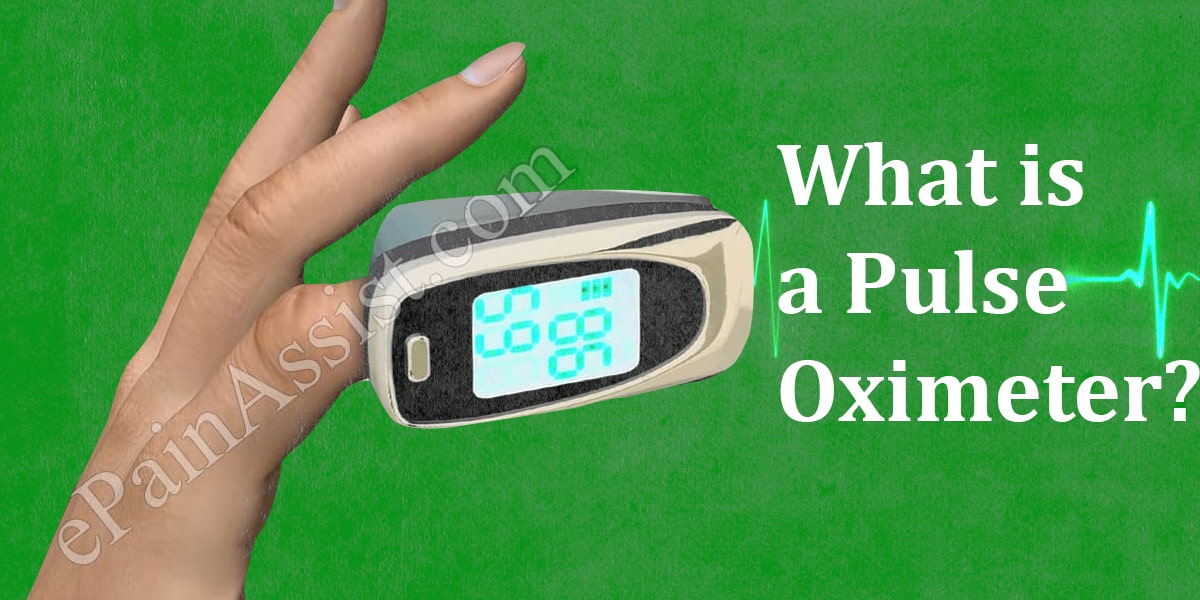What is a Pulse Oximeter?
The pulse oximeter is a small, lightweight device that is used to monitor the amount of oxygen in the body. It is a non-invasive tool that can be attached painlessly to the fingertip. It sends two wavelengths of light through the finger to measure the pulse rate and oxygen in the body.
More than 85 percent of the blood carries oxygen.(1) This oxygen saturation is needed to keep the cells and the body healthy. An oxygen saturation level of 95% is considered normal in healthy individuals while a level of 92% or below indicates a deficiency in oxygen reaching tissue of the body.

As the assessment is done, the oxygen level as well as the pulse rate is displayed on its screen.
What is Blood Oxygen Saturation?
Blood oxygen saturation or SpO2 readings an estimation of the amount of oxygen in the blood.
A reading of 95% or above is considered a normal oxygen level. If the reading is below 92%, it suggests that the blood is poorly saturated.
An insufficient saturation can lead to adverse health conditions including:
- Chest pain
- Shortness of breath
- Increased heart rate
What is Pulse Rate?
Pulse rate is an estimation of the number of times the heart contracts per minute.
The normal pulse rate is 60-100 beats per minute. A lower heart rate implies more efficient heart function. In some, the pulse rate below 60 bpm may indicate bradycardia that can lead to problematic symptoms such as chest pains, fatigue, fainting, and memory problems.
A pulse oximeter gives accurate insights of SpO2 and pulse rate within a matter of seconds, helping you respond quickly and confidently to the abnormal readings.
Purpose and Uses of Pulse Oximeter
The purpose of a pulse oximeter is to keep a check on how well the heart is pumping blood all through the body.
It monitors the health condition of individuals with the conditions that can affect the oxygen levels, especially those in hospital. The various health conditions include:
- Anemia
- Lung cancer
- Pneumonia
- Asthma
- Chronic obstructive pulmonary disease
- Congenital heart defects
- Heart attack or heart failure
The pulse oximeter can also be useful in assessing:
- How is lung medicine is working?
- The effect of ventilator
- The need for help in breathing
- Oxygen level during or after surgical procedures
- The effectiveness of supplemental oxygen therapy
- The ability of someone to tolerate an increase in physical activity
- Momentarily stopping of breathing while sleeping as in case of sleep apnea.
How to Use Pulse Oximeter?
A pulse oximeter can be used in both inpatient and outpatient settings. It can also be recommended to be used at home.
It is mostly available in a form of a clip-like device that can be placed on the finger, earlobe, or toe. Little pressure is felt but there is no pain or pinching.
In some, the probe is placed on the finger or forehead with a sticky adhesive.
If nail polish is applied to the nail, it should be removed before attaching a pulse oximeter to the finger.
The probe can be kept for as long as a person needs to monitor the pulse and oxygen level.
During surgery, the probe is attached beforehand and removed once the person wakes up and no longer needs supervision. Sometimes it is even used to take single reading very quickly. As the test is done the probe is removed.
As the oximeter measures the oxygen level he looks at the reading and determines if another testing is necessary. If someone is under oxygen therapy, reading on the low side would indicate the need for more oxygen.
Those using an oximeter at home should know about the reading and what to do if it goes above or below certain levels. It may be useful for measuring blood oxygen levels but they have certain limitations and risks of inaccuracy under certain circumstances. People should therefore be aware of other signs and symptoms as well and communicate with their healthcare provider accordingly.(2)
The pulse oximeter is a non-invasive device that can help measure the oxygen levels in the blood. There are no risks or complications of using it apart from skin irritation caused by the adhesive used in certain probes.
